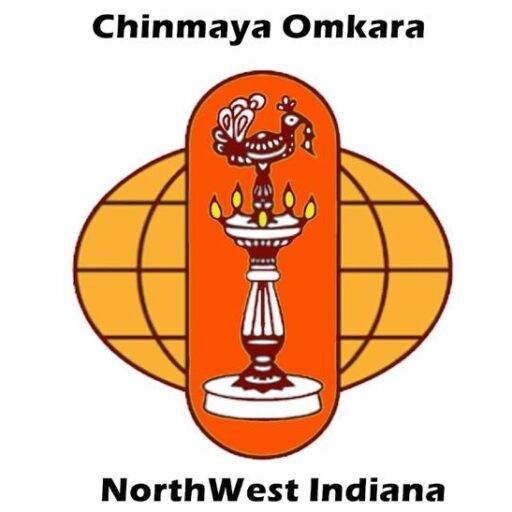Upanishad Course – Chapter 8
Week 15
In order to experience joy we need details in order to understand and appreciate who we are.
We should be able to understand and live the fact that “I am existence” not just that “I exist”.
Then there is Joy, a sense of freedom! The Upanishad course is designed to be a catalyst for us to be full time seekers.
Full time seekers are seeking with their eye opened and we will know this if we are less focused on creation and more focused on Consciousness.
We should feel like a Paramahansa, one who has let go of space, time, matter and is only ‘Being’.
Recap of previous lessons: Focus of
Lesson 4: Subject matter: Vichara.
Lessons 5 and 6: Atma vichara
Lesson 7: Brahmavichara
All these vicharas are to encourage us to nurture vasanas.
Right now we have Anatma vasanas (I don’t feel I am existence).
By becoming an authentic and deep reflector, we will start to reflect on the process of reflection.
We will shift from reflecting on a certain lakshana to how the reflection of the lakshana is happening.
Shift from what to how! In Mundaka Upanshad, we flowed through nine lakshanas.
- Divya: You are awareness
- Amurta: You are existence
- Purusha: You are joy
- Bahya Abhyantara: You are not your lifestyle
- Aja: You are not your body
- Aprana: You are not your breath
- Amana: You are not your mind
- Shubra: You are not your intellect
- Para: You are not your ego
We don’t feel the above because of Maya.
Maya is inhibiting us from knowing who we are instead it makes us feel what we are not.
We start to feel Mithya (illusion, appearance, reflection, etc). Mithya is a mirror (everything looks backwards). Bhagavan Krishna tells Arjuna “Na Tvam Shochito Arhasi” meaning “You don’t deserve to be sad”.
All that sadness experienced is by the ego alone, not by you.
Sri Nisargadatta once said “I am told I was born, I do not remember”.
We are stuck in this mithya. However, to help us we have to feel like Brahman loves us.
That is an inaccurate statement because Brahman is oneness. In order to love, there have to be two entities.
But in order to help us understand, we can accept that since Brahman loves us, He manifests as Bhagavan.
Avatara zero in reference to Shrimad Bhagavatam is Bhagavan Narayan (First avatara of Brahman).
But factually, even Bhagavan is an avatara.
Reference for this comes from Svetasvara Upanishad:
Mayam tu prakritim vidyat, Mayinam tu Mahesvaram
Mahesvara or Bhagavan is Mayapati, meaning He uses Maya to manifest Prakriti or creation.
Further descriptions of Bhagavan are the one who engages in Srishti: creation; Stithi: controlling; samhara: consuming; nigraha: correcting and Anugraha: conserving.
We use these descriptions because of our orientation.
We see a creation and therefore attribute it to Bhagavan, the creator.
Sat is that which exists in all three periods of time. How can time be used to describe that which is beyond time.
But since we are very much oriented towards time, it helps us to go beyond time.
Therefore, we need Bhagavan.
As long as we feel a relationship with anyone else, we also have a relationship with Bhagavan.
When we feel no relationships at all, that is oneness.
Lesson 8: Creation
Our rishis were psychologists, sociologists, planners and humanitarians.
They loved humanity and always wanted the best for them.
The best way to protect a human is by making them independent.
Our rishis did what they did to help us become independent.
They tried to lift our understanding of creation, Maya, etc up to make us more independent.
That is why there are 64 creation theories. For beginner seekers, Bhagavan is the cause.
For intermediate seekers, Bhagavan is the uncaused cause and for an advanced seeker, there is no creation. There is only Consciousness.
Mundaka Upanishad, Section 2, chapter 1 verse 3, 4, 5 and 6 are all different expressions of creation theories.
Verse 3 states: “From Brahman manifested prana, mind, all senses, space, wind, fire, water and Earth that supports this multiverse”.
Isvara is potential for creation. Isvara manifests more as Hiranyagarbha (field and seed) and this manifests more as Virat (cosmic being).
Karana (ego) expresses as Sukshma (mind) which expresses as Sthula (gross body).
Verse 4 states the same idea but with a slight branching.
From Brahman there is Bhagavan from which arise a subset of creation (heavens).
From heavens come space and from space comes earth.
Verse 5 states that from Brahman comes Bhagavan, from Bhagavan comes rain. From rain comes food and from food comes humans
Verse 6 states that from Brahman comes Bhagavan, from Bhagavan comes Veda.
From Veda there is deeksha and from deeksha there is yagna.
All these creation theories are trying to tell us that everything is divine (food, rain, humans, etc). Source of all is Brahman.
In Bhagavad Gita, Chapter 3, verse 14 and 15, Bhagavan Krishna shares with Arjuna seven factors.
The top most factor is Akshara and bottom most factor is Bhuta.
Brahman is Akshara and we are all Bhuta.
All our DNA and vasanas are that of Bhagavan.
Our rishis have discovered our flow of speech. It starts with para (awareness) >pashyanti (thought)>madhyama (when word is in the mouth but no one can hear it)>vaikhari (speech). So everything we say comes from awareness.
In Upadesha Sara, Bhagavan Ramana shares that living the divine life is towards the murti made up of eight factors: earth, water, fire, air and space AND mind, intellect and ego.
So our pooja should be to feel that everything outside of us (five elements) and inside of us is divine.
When one starts to engage in this Seva towards Isvara who is expressing as Jagata, this helps one to be humble.
All these teachings encourage us to be humble.
Humble person has no ego, no creation, no creator…only Consciousness!

